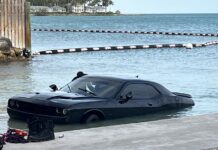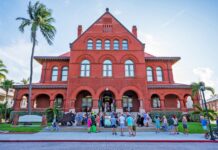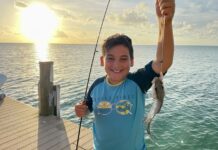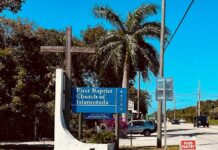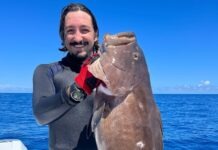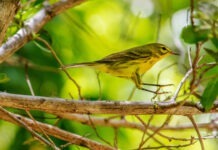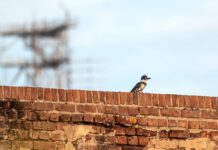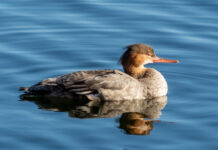Florida has a tetchy relationship with flamingos. A few centuries ago, before the state had been developed, they were common in South Florida and the Keys, as evidenced by a letter written by Gustavus Würdemann, an employee of the U.S. Coast Survey. He worked in the Keys for several months in 1857, installing equipment to monitor and record the tides, but he had a hobby of collecting bird and fish specimens and sending them off to the newly burgeoning Smithsonian Institution, as well as the Museum of Comparative Zoology at Harvard.
In his letter, which was published posthumously in 1860, he recounts seeing a flock of 500 American flamingos on the flats around Indian Key and Islamorada. (John James Audubon wrote of similar-sized flocks a quarter-century before.) Würdemann also wrote about going out with a local hunter, who captured at least 100 of them and kept them, with their legs tied together, in a single canoe. (Many of the birds did not survive, which was how Würdemann collected the skins he sent to the Smithsonian.)
Hunting practices like this, as well as the plume hunters who decimated wading bird populations throughout South Florida at the end of the 1800s and early 1900s, largely wiped out the Florida population of American flamingos. For a long time it was believed that any flamingos seen in South Florida were escapees from Hialeah Race Track, though that was disproved in the early 1990s when a bird that had been banded in Mexico was seen in the Everglades.
Also, there was the lesson of Conchy, a flamingo trapped in 2015 for its own protection by Tom Sweets of the Key West Wildlife Center at Naval Air Station Key West. Before it was released near Everglades National Park it was equipped with a satellite transmitter, which tracked its movements on a daily basis. The data showed the bird moving all over Florida Bay for the next few years, yet it was reported very rarely by birders. Despite being four-foot-tall pink birds, flamingos are apparently capable of moving around with hardly anyone noticing them.
Back in the 2010s several large flocks of flamingos, most likely birds that had come over from the Bahamas, were seen at a stormwater treatment area in Palm Beach County known as STA-2. Almost 150 were seen at the peak in 2014, but those numbers slowly dwindled back to nothing.
Generally in Florida we only get the occasional flamingo sighting; more often than not, lone birds. (I’ve seen three of them since 2020, and eight or 10 in the time I’ve lived in the Keys.) Florida Bay tends to be the most likely place to see them. At least this was the case until tropical storm-turned-hurricane Idalia came along.
In the week since the storm passed, American flamingos have been popping up everywhere – six were spotted at St. Marks Wildlife Refuge just south of Tallahassee, one in a lake in Gainesville, one in Palm Coast, three in Clearwater, 16 at Treasure Island Beach, three in Fort De Soto, two on Anna Maria Island, five at Boca Grande in Charlotte County, 14 in Factory Bay near Marco Island, and a whopping 51(!) at Estero Bay Preserve State Park near Sanibel.
They’ve also been seen in Alabama, South Carolina, Tennessee and Ohio.
The flamingos have been a mix of adult and immature birds. (You can tell by how pink they are.) Since Idalia formed off the coast of the Yucatan, and lingered there for some time, it’s thought the Yucatan is where most of these birds came from.
It seemed only a matter of time until some were spotted in the Keys, which turned out to be the case.
Last Friday a ranger at Curry Hammock State Park spotted three flamingos flying southwest over the park. Late in the afternoon, as Mariah Hryniewich and Gianna Arcuri were finishing their day at the Florida Keys Hawkwatch, they saw a report that said Amy Grimm had just spotted eight American flamingos in one of the salt ponds of Grassy Key, just a few miles north. When they arrived there the flamingos were all spread out in a line, mostly loafing. They set up their scopes to get better looks at the birds, which was when Mariah noticed a wide, yellow, plastic band on one of the birds’ legs. It had the letters DXCL on it.
Through a few of her birding connections, Mariah quickly found out that the band was from a project at Ría Lagartos Biosphere Reserve located near the eastern tip of the Yucatan Peninsula. The bird was banded in 2000, making it 23 years old. (American flamingos tend to breed between 2 and 6 years old.) It was banded during a time when the American flamingo population was being heavily preyed on by jaguars, and a team of veterinarians and scientists had worked together to incubate and hatch 200 eggs.
Mariah and Gianna went out to dinner, but stopped by the Grassy Key salt ponds on the way home to see the birds again, because you can never see enough flamingos. But the birds had moved on. Where they’d gone is still unclear, though three were spotted Tuesday off near Munson Island off Big Pine, and one was spotted by Colleen Fuller on Big Pine on Tuesday evening.
Whether the birds will stay in Florida, try to return to Mexico, or possibly move on to somewhere like Cuba is unknown. The ones that have been seen around the state are already getting hard to find. Though, as Conchy taught us, flamingos being hard to find does not mean they are not here.
